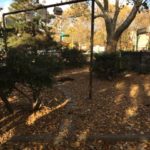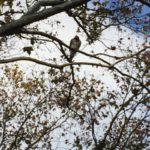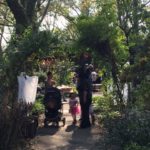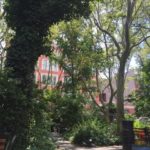The Stewardship Mapping and Assessment Project (STEW-MAP) is a national USDA Forest Service research program designed to answer the questions: Which environmental stewardship groups are working across urban landscapes? Where, why, how, and to what effect?
STEW-MAP studies a city’s or region’s environmental stewardship regime, creating publicly available maps and databases to help support community development. The project adds a social layer of information to biophysical information on ‘green infrastructure’ in metropolitan areas.
STEW-MAP captures environmental stewardship through a combination of methods: an organizational survey to identify organizational characteristics, geographic area of influence (enabling spatial analysis), and relationships with other civic, private, and governmental organizations(social network analysis)
STEW-MAP defines a “stewardship group” as a civic organization or group that works to conserve, manage, monitor, advocate for, and/or educate the public about their local environments.
Where has STEW-MAP been implemented?
![[map:] Shows locations of stewardship groups in NYC area.](https://www.nrs.fs.fed.us/urban/monitoring/stew-map/local-resources/images/stewmap_image_350.jpg) Initially a New York City project, STEW-MAP has grown into a multi-city research program. To date, the project has been replicated in Baltimore, the Chicago region, and Seattle. Studies are underway in Los Angeles, Philadelphia, and San Juan. Boston, Atlanta, and Washington, DC are also interested in conducting STEW-MAP studies. The original New York City STEW-MAP was developed by a team of Forest Service and university researchers working with dozens of municipal agencies and citywide environmental nonprofits who identified a need to create a common database and map.
Initially a New York City project, STEW-MAP has grown into a multi-city research program. To date, the project has been replicated in Baltimore, the Chicago region, and Seattle. Studies are underway in Los Angeles, Philadelphia, and San Juan. Boston, Atlanta, and Washington, DC are also interested in conducting STEW-MAP studies. The original New York City STEW-MAP was developed by a team of Forest Service and university researchers working with dozens of municipal agencies and citywide environmental nonprofits who identified a need to create a common database and map.
Why is STEW-MAP important?
Long-term community-based natural resource stewardship can help support and maintain our investment in green infrastructure and urban restoration projects. STEW-MAP databases and interactive maps enable the public, municipal agencies, and nonprofits to visualize where and how hundreds of civic environmental stewardship groups are working throughout a city or region. Custom downloads of STEW?MAP data have been used by local government and civic organizations in support of policymaking and natural resource management activities. Network analyses of these groups show the connections between civic environmental actors and identify important stewardship nodes within the network. Analysis of where stewardship is or is not taking place highlights opportunities or issues to address in meeting local conservation goals.





